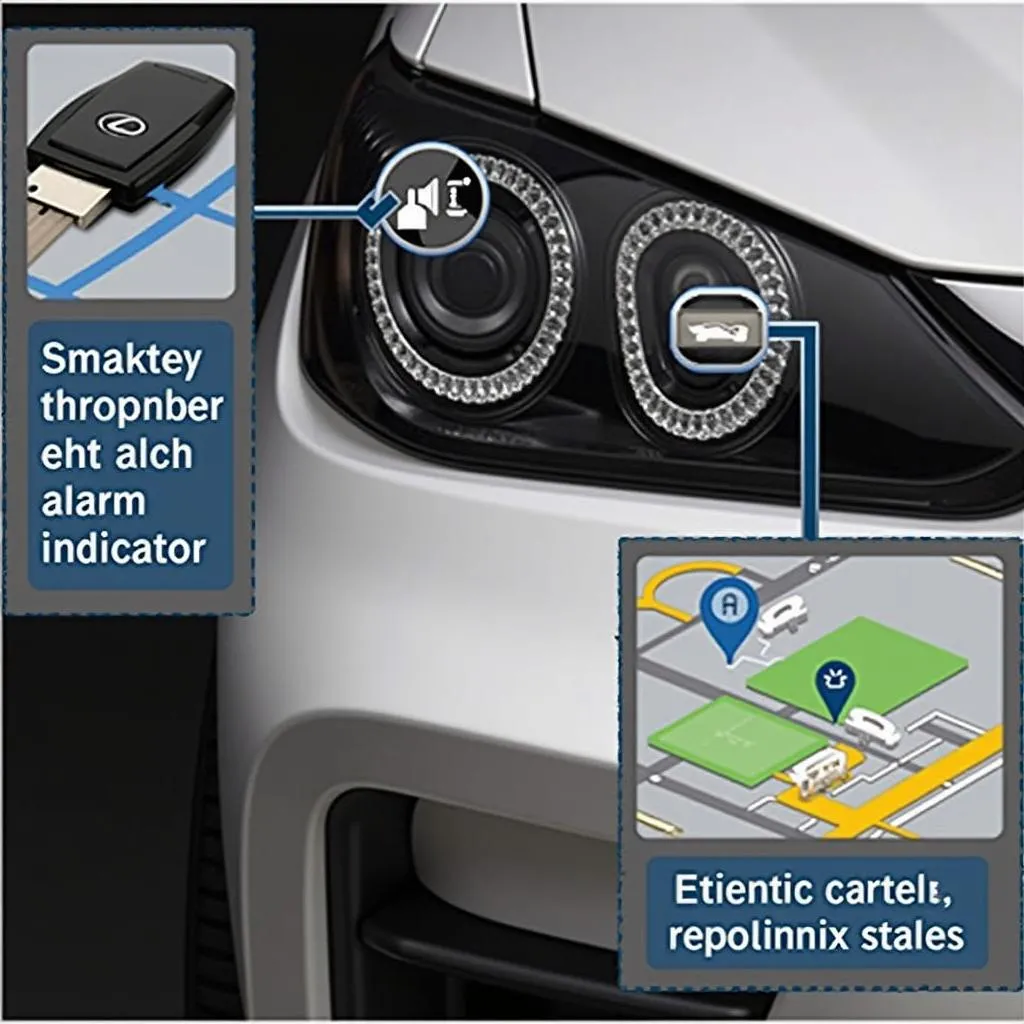The Tesla Model S key fob is a sleek and sophisticated piece of technology that allows you to access and operate your vehicle without a traditional key. However, like any electronic device, it can occasionally experience issues. This comprehensive guide will walk you through common problems, troubleshooting tips, and frequently asked questions about the Tesla Model S key fob.
Common Tesla Model S Key Fob Problems
Several factors can contribute to a malfunctioning key fob. Here are some of the most prevalent issues faced by Tesla Model S owners:
- Key Fob Not Detected: This is often characterized by the car not responding to the key fob’s presence, making it impossible to unlock or start the vehicle.
- Reduced Signal Range: You might find yourself standing closer than usual to your Model S for the key fob to be detected, signaling a weakened signal.
- Key Fob Buttons Not Working: One or more buttons on the key fob, such as lock, unlock, or trunk release, might become unresponsive.
- Fast Battery Drain: The key fob battery might drain quickly, requiring frequent replacements.
Troubleshooting Your Tesla Model S Key Fob
Before assuming the worst, there are several troubleshooting steps you can take to address key fob problems:
- Check and Replace the Battery: A depleted battery is the most common culprit behind key fob malfunctions. Battery in key fob dies often, so replacing it should be your first course of action. Refer to your Tesla owner’s manual for instructions and the correct battery type.
- Re-Sync Your Key Fob: Sometimes, the connection between your key fob and the car might need a reset. You can typically re-sync the key fob through the Tesla touchscreen interface.
- Check for Interference: Other electronic devices, especially those operating on similar frequencies, can interfere with the key fob’s signal. Try moving away from potential sources of interference.
- Inspect for Physical Damage: Examine your key fob for any physical damage like cracks, water exposure, or button malfunctions. Physical damage often requires professional repair or replacement.
Using Your Phone as a Key
Remember, your smartphone can serve as a backup key for your Tesla Model S. The Tesla mobile app allows you to lock, unlock, and even start your vehicle remotely.
When to Seek Professional Help
If troubleshooting steps don’t resolve the issue, it’s best to seek help from Tesla service. They have the expertise and diagnostic tools to identify and repair complex key fob problems.
Key Fob Tesla Model S: Frequently Asked Questions
How do I know if my key fob battery is low?
Your Tesla will display a message on the touchscreen if your key fob battery is low.
Can I drive my Tesla Model S without the key fob?
While you can unlock and start your Tesla Model S with your phone, it’s recommended to have the key fob with you as a backup.
How do I reset my Tesla Model S key fob?
You can usually resync your key fob Tesla through the touchscreen interface in your car. Consult your owner’s manual for specific instructions.
What is the range of the Tesla Model S key fob?
The key fob has a limited range, typically around 30 feet. However, this can be affected by interference and battery life.
Can I get a replacement key fob for my Tesla Model S?
Yes, you can purchase replacement key fobs directly from Tesla.
Conclusion
The Tesla Model S key fob is a vital part of your vehicle’s operation. Understanding common issues, troubleshooting techniques, and utilizing your phone as a backup can keep you in control of your Tesla driving experience. Remember, if you encounter persistent problems, seeking professional help from Tesla service is always recommended.

